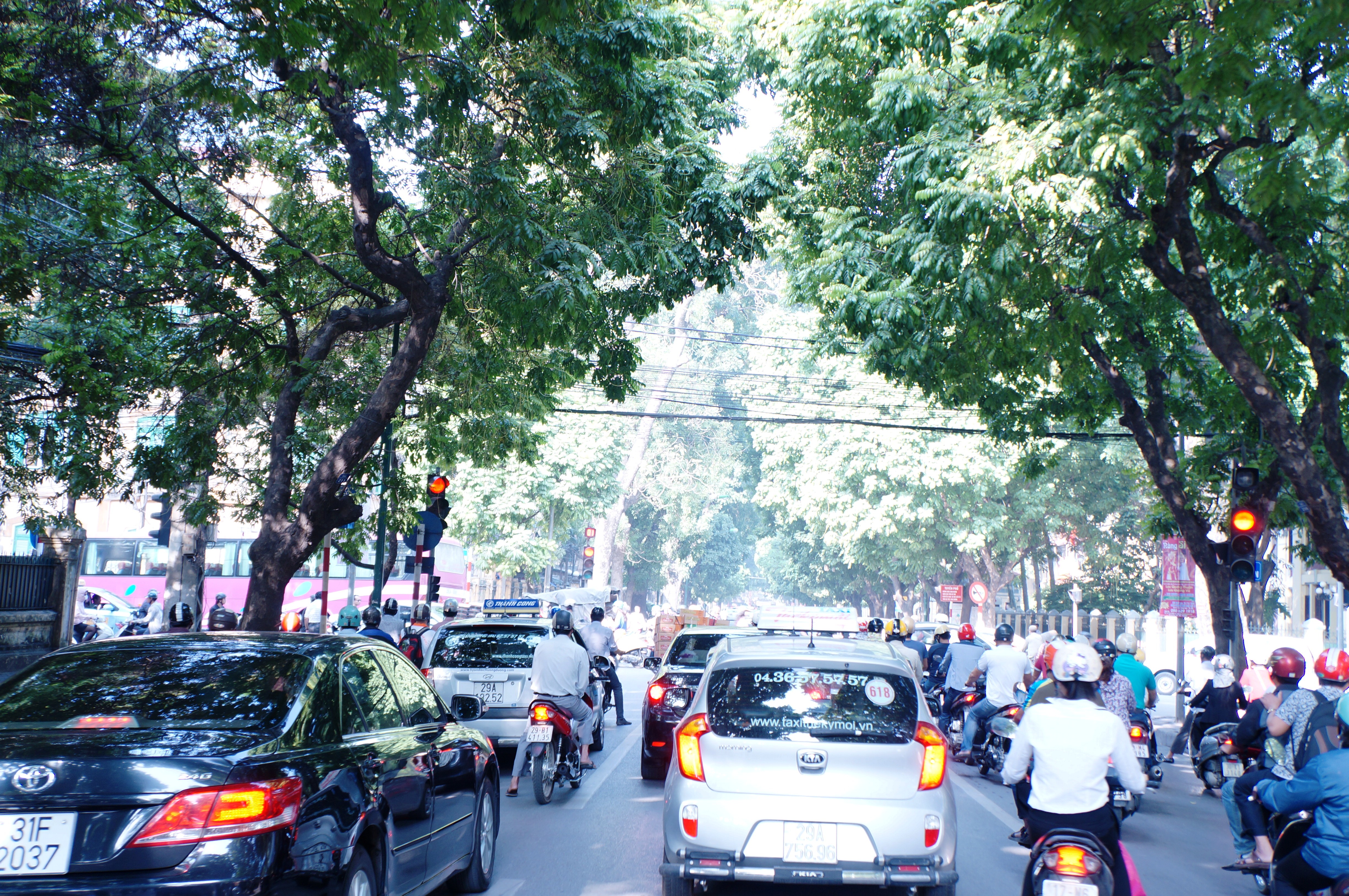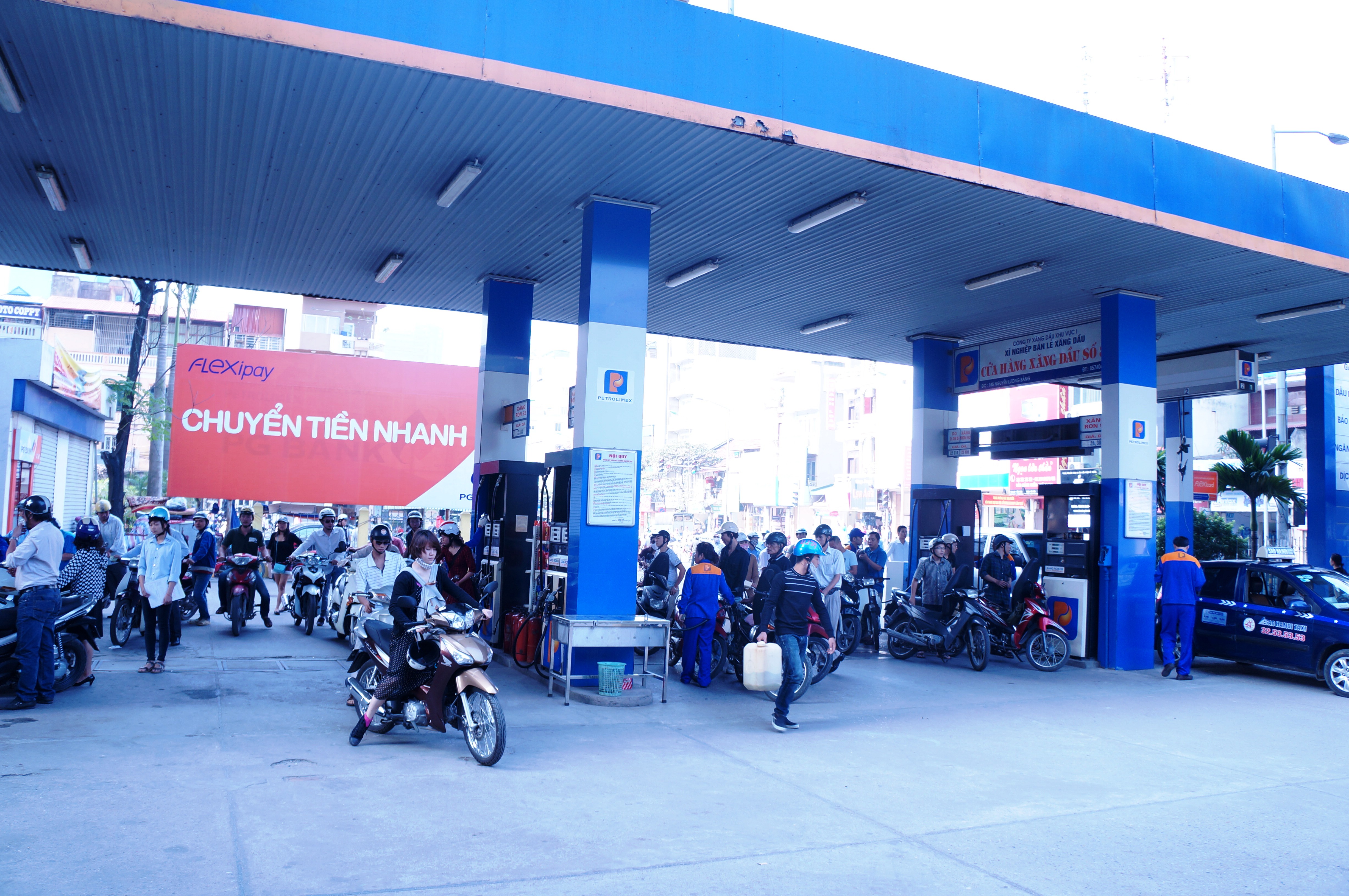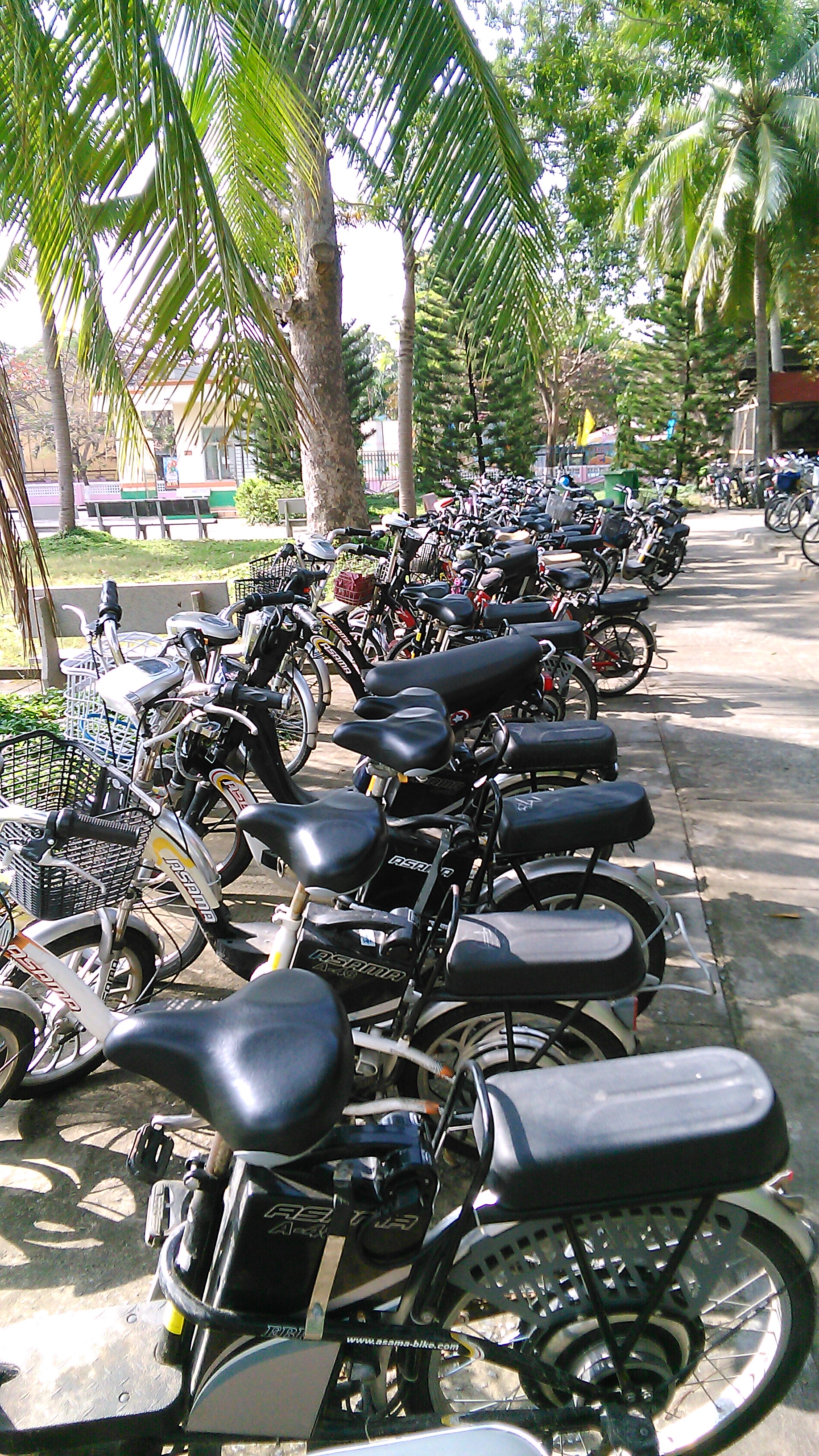
17 September 2018
In order to understand contemporary mobilities, we must acknowledge the overwhelmingly widespread use of motorbikes in Southern countries, a surprisingly overlooked subject in the mobilities turn. Arve Hansen's thesis takes us to Vietnam, to the streets of Hanoi, the city of motorbikes.
Thesis title : « Capitalist transition on wheels: Cars, motorbikes and mobility in Hanoi ».
Country : Norway
University : University of Oslo
Year : 2016
Research supervisor : Harold Wilhite, Hege Merete Knutsen
My overall research topic is consumption and development, and I am particularly interested in changing consumption patterns in contexts of rapid social and economic changes. In my PhD thesis I studied the transition from bicycles and walking to motorbikes and cars in Hanoi. In other words, I studied a transition from very low-carbon mobilities to high-carbon mobilities. I approached the topic at the intersection between macro-scale processes of economic development and everyday mobility practices. And in Vietnam’s capital city, understanding contemporary mobilities first and foremost requires an understanding of the motorbike, a so far surprisingly understudied vehicle in the mobilities turn.
Motorised two-wheelers come in a range of shapes and sizes, from large motorcycles to small mopeds. In Vietnam, they are usually the latter, and they are generally all referred to as motorbikes. I will leave it at that. The main point here is not what to call them, but what all motorised two-wheelers have in common: they have been largely neglected in the ‘mobilities turn’. If they do figure in this literature, it tends to be as a form of alternative mobility in car-dominated societies in the ‘West’. So far, almost no research has taken seriously the crucial role the motorbike plays in the daily lives of hundreds of millions of people around the world.
In Southeast Asia, motorbikes are found everywhere. But Vietnam breaks all records. Since the economic reforms known as doi moi were initiated in 1986, Vietnam has been transformed from a country of bicycles to a country of motorbikes. Now, there are perhaps as many as 50 million motorbikes in the country. Indeed, already in 2012 there were on average more than 2,5 motorbikes per household in Hanoi and Ho Chi Minh City. The speed of the transition from bicycles to motorbikes has been astounding. Studies have found that in 2005, more than one-third of non-walking trips in Hanoi were covered by bicycle, while a bit more than half of trips involved motorbikes and only one percent cars. By 2012, two-wheeled transport still represented 85 percent of total traffic, but 96.8 percent of this share was represented by motorbikes and only 2.6 percent by bicycles (the remaining 0.6 percent were electric scooters 1) .
Vietnam has thus transformed into a motorbike society, something that is obvious in the streets of Hanoi. In a short space of time the motorbike has come to play an absolutely vital role. The streets are full of small motorbikes, humming, honking, braking, accelerating. They are all around you, forcing you to consider every step while engulfing you in a constant buzzing sound, as if you had entered a gigantic beehive populated by oversized, mechanical bees. They make crossing the street a seemingly insurmountable task. They make sidewalks impossible to walk on. They make the air dangerous to breathe. Indeed, traffic is so challenging that a large number of online user guides for tourists on ‘how to cross the street’ are available.
But most importantly, the motorbike is what makes the city work. It is used to cover more or less every mobility need; to transport impressively large items, to commute to work, to take kids to school, to go shopping, to meet friends, even to go on dates or take the dog for a walk. It is a city of motorbikes.
How did Hanoi become a motorbike society? And how does car ownership emerge in this context of two-wheeled dominance? These are some of the questions that my thesis has tried to answer.
I am interested in the social, economic and cultural changes that take place in processes of rapid economic growth, and the new consumption patterns and practices that emerge in these contexts. For my thesis I studied these changes by approaching Hanoian mobility from the viewpoint of car retailers and marketers, company representatives, academics, transport experts, and government officials, but mainly through seeking to understand everyday mobility as seen from the streets. I conducted 62 semi-structured interviews, about two-thirds of these being with car owners and motorbike owners.

The increasing number of cars in the streets of Hanoi is a considerable challenge for mobility in the city.
In addition, I realised early on that I had to join the flock and become ‘moto-mobile’ and drove a motorbike every day, everywhere throughout my seven months of fieldwork. My approach thus combined mobile and immobile methods in what I have labelled a ‘motorbike ethnography’ 2.
This played a vital role for my understanding of Hanoi and of how Hanoians carry out and experience their everyday lives, and of the crucial role the motorbike plays in what I came to call ‘the system of moto-mobility’.
To my knowledge, this thesis is the first comprehensive study of transport and mobility—and the first to study emerging automobility—in Hanoi. It is also among the first studies to consider the attempts to develop a domestic car industry in Vietnam, and the first to analyse these attempts in a wider societal and developmental context. And, crucially, the thesis breaks new ground within the ‘mobilities turn’ by giving motorbikes the attention they deserve.
The thesis develops a holistic approach to consumption in processes of rapid economic development, balancing an account of important macro-economic drivers, such as regional and global economic integration, industrial development and state-ideological shifts, with conducting grounded research on how people live and perform their everyday lives. By using this approach I have shown that the history of motorbikes in Vietnam can be traced back to colonial times, but that Vietnam developed into a motorbike society as part of the dramatic changes in the country following on from market reforms.
East Asian manufacturers played a crucial role in these processes following Vietnam’s opening up to foreign trade and investment in the early 1990s. First, Japanese and Taiwanese manufacturers established factories in the country, then often illegal trade with China around 2000 led to dramatic reductions of prices in what has come to be known as the “China shock”. Japanese and Taiwanese manufacturers in turn recaptured the market through establishing larger parts of their businesses in Vietnam and making motorbike models designed for the Vietnamese market.
But in addition to these macroeconomic processes, the motorbike has entered the everyday practices of Vietnamese consumers in a context where people needed and wanted to move around more, but cars were too expensive and public transport networks were insufficient. The motorbike was the perfect replacement for the bicycle as people could largely carry out the same practices as before, but could go longer, faster and use less effort. Hanoi’s two-wheeled infrastructure has thus both shaped and developed alongside both velo-mobile and moto-mobile everyday practices, and the combination of infrastructure, vehicles and practices is what I have termed the system of moto-mobility. In this “system”, consumers are often “locked in”, as many of my informants did not see that they really had any other option than riding a motorbike. Even those who could afford a car would often use a motorbike to get around in the city.
Furthermore, my approach has allowed me to show that while the Vietnamese car industry has largely been a failure, the car has emerged as a must-have vehicle for many in the new urban middle classes. Cars allow their owners and their families to stay safe, cool, dry, white and clean, while also escaping much of the worrying air pollution. Interestingly, the car was thus often portrayed as the responsible and healthy mobility option by my informants. And, of course, a car offers unique value in terms of mobile distinction, whether in the streets of Hanoi or when travelling to the countryside.
For these reasons, combined with increasing incomes and decreasing taxes on new cars, car ownership is surging in Hanoi, in the process challenging the system of moto-mobility. The thesis shows that with its narrow streets, unfit for mass car ownership, Vietnam’s capital city is headed towards a fully-fledged traffic nightmare.
Since my fieldwork, the trends towards emerging automobility that I located have become more clearly manifested. This is also apparent in the strong growth in the Vietnamese auto industry the last couple of years, although the industry still struggles with the same problems I located in my thesis, such as lack of policy coordination and failed attempts to develop domestic ‘supporting industries’ 3.
But although there are more cars in the streets every time I visit the city, gradually clogging up the streets even more than in the past, the motorbike still remains the king of Hanoi. Most Hanoians use it to get around, sneaking past the many cars stuck in traffic. Even car owners keep their motorbikes in order to be able to move faster in the city. National statistics confirm the continued importance of motorbikes: While around 270.000 cars were sold in Vietnam in 2017, the same year saw motorbike sales reach 3.2 million.

The ‘system of moto-mobility’ in practice.
While the government has long considered following in the footsteps of China and banning motorbikes in cities, the persistent popularity of the vehicles also opens the way for considering alternative, two-wheeled futures. While new developments in public transport are crucial, Hanoi should also focus on electric scooters and, crucially, on making the bicycle a safe and convenient means of transportation again.
We need new ideas for more sustainable urban mobility, especially in processes of rapid development and urbanisation. The motorbike may play a role as a competitor to automobility. Can electric two-wheelers save us from urban airpocalypse? There seems to be some potential in Vietnam, where electric bicycles and electric scooters have grown immensely in popularity since I did my fieldwork.

Electric two-wheelers are rapidly increasing in popularity, but are so far competing more with traditional bicycles than with motorbikes.
So far, however, the electric two-wheelers seem to be most popular among those too young to drive a motorbike, therefore representing a competitor to bicycles rather than to motorised two-wheelers. A combination of ‘greening’ motorbikes and progressive policies towards reintroducing bicycles as a central means of transportation could help save Vietnam’s cities from facing a future resembling the gridlocked streetscapes of more affluent Southeast Asian capitals
Whatever the answer, the motorbike deserves much more academic attention, in terms of its histories, meanings, impacts and potentials, from the motorbike societies in Asia to, for example, Asian motorbike exports and the booming moto-mobility in many African cities. In Vietnam this would include also studying the role of new versions of the two-wheeled so-called ‘sharing economy’, as well as the role and potential of two-wheelers in meeting urban demand for transport of goods.
And by the way, if you want to cross the street in Hanoi, just stroll steadily, while keeping your eyes on traffic and let the motorbikes dodge you. A word of warning, though: cars don’t dodge.
1 For more, see https://www.researchgate.net/publication/308413985_Sustainable_Urbanisation_in_Vietnam_Can_Hanoi_bring_back_the_bicycle
2 Ethnography can mean many different things, but involves data collection through interaction with people in their everyday lives in order to get first-hand experience of what is being studied. It thus involves going beyond what people say and also consider, and often participate in, what they do.
3 http://www.eastasiaforum.org/2016/06/10/whats-driving-growth-in-vietnams-auto-industry/
For the Mobile Lives Forum, mobility is understood as the process of how individuals travel across distances in order to deploy through time and space the activities that make up their lifestyles. These travel practices are embedded in socio-technical systems, produced by transport and communication industries and techniques, and by normative discourses on these practices, with considerable social, environmental and spatial impacts.
En savoir plus xLifestyles
Policies
To cite this publication :
Arve Hansen (17 September 2018), « Hanoi, a metamorphosis : from bicycles to motorbikes », Préparer la transition mobilitaire. Consulté le 27 April 2025, URL: https://forumviesmobiles.org./en/new-voices/12655/hanoi-metamorphosis-bicycles-motorbikes